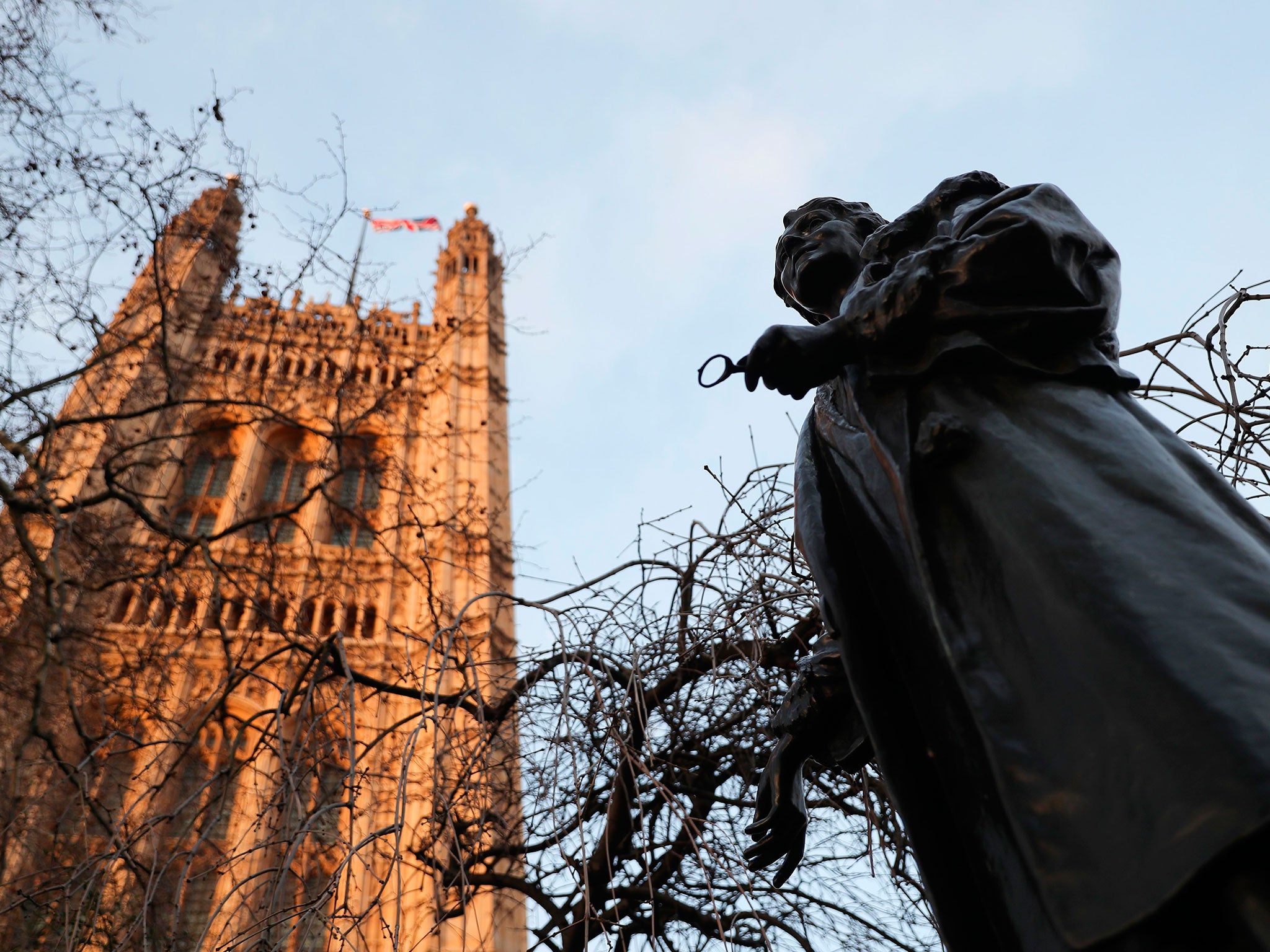We can't let Emmeline Pankhurst's statue be moved away from the Houses of Parliament – it would be illogical and unjust
The history of this monument, its inspiration to parliamentarians, campaigners and members of the public, relies on its position here

Immediately after Emmeline Pankhurst's death in 1928, suffrage campaigners began lobbying the government for a permanent statue of her to be erected near parliament. Her contribution to the movement which delivered votes for women was so great, that its importance was recognised during her lifetime. There are few campaigners who have such impact.
In 1930, the former prime minister Stanley Baldwin unveiled the statue in Victoria Tower Gardens in a huge ceremony celebrating her life and legacy. Later, after being moved to a new position in Victoria Tower Gardens, campaigners were even given an assurance the statue would not be moved again by the ministry of works.
It is therefore of little surprise that the current suggestion to move it from its current place outside the Houses of Parliament to to the private Regent’s University in Regent’s Park has inspired such a passionate public response.
But Pankhurst’s statue is not just a symbol of the fight for equal voting rights, a symbol of deep historic significance, or even a celebration of her life and legacy – for many MPs it is a continuing inspiration and daily reminder of the deep responsibility we hold. In the entirety of British democratic history, there have been just 491 women MPs.
To put that number into perspective, there are currently 441 men in the House of Commons. So we cannot look at Pankhurst’s statue as purely a reminder of history, or something that can be simply uprooted and replaced with something else, somewhere else, but as part of upholding a thriving parliamentary democracy, where all voices are counted as equal. We must show our respect to those women who campaigned alongside Pankhurst and wished her to be remembered through the statue next to parliament.
No year could this subject be more emotive, than in the one in which we celebrate the centenary of some women finally getting the vote. This year has seen us begin the commemoration to the suffrage movement, with the Voice and Vote exhibition this year, which for the first time unveiled the hidden history of women in parliament.
The exhibition documents, the campaigning, protests, and the achievements of those who fought for women like me to be in the chamber today. Pankhurst once said, “I would rather be a rebel than a slave”. In this building, I often feel like I am performing my own acts of rebellion, just by being here. Her words are still relevant for women today, and they make most sense in regard to this place, and our democracy.
The messages conveyed in this exhibition are made relevant by the fact that they are viewed in parliament itself, the focal point of the suffrage movement and the site of some of its greatest protests. It was here that Emily Davison hid during the 1911 census, demonstrating her right to be at the heart of British democracy. Pankhurst’s statue does the same thing. Its history, its inspiration to parliamentarians, campaigners and members of the public, relies on its position here, the places she dedicated her life to bettering.
We must not forget that Pankhurst fought for women to have a place in parliament, and this is why a statue of her was erected here. So where is the logic in moving this symbol of her legacy to a place which has no connection to her at all? As chair of the House of Commons works of art committee, and as a woman MP, I have learnt the extent to which our surroundings impact our sense of belonging.
Parliament is filled with paintings and statues of old, white, elite men. Brilliant though the art is, and impressive though the people portrayed were, it is a constant reminder to women, and all minorities, that we are treading on someone else’s ground. I will strenuously oppose any move of this sculpture. Her significance to parliament, on which her statue casts its shadow, is just too important to ignore.
Alison McGovern is the Labour MP for Wirral South, and chair of the House of Commons works of art committee

Join our commenting forum
Join thought-provoking conversations, follow other Independent readers and see their replies
Comments